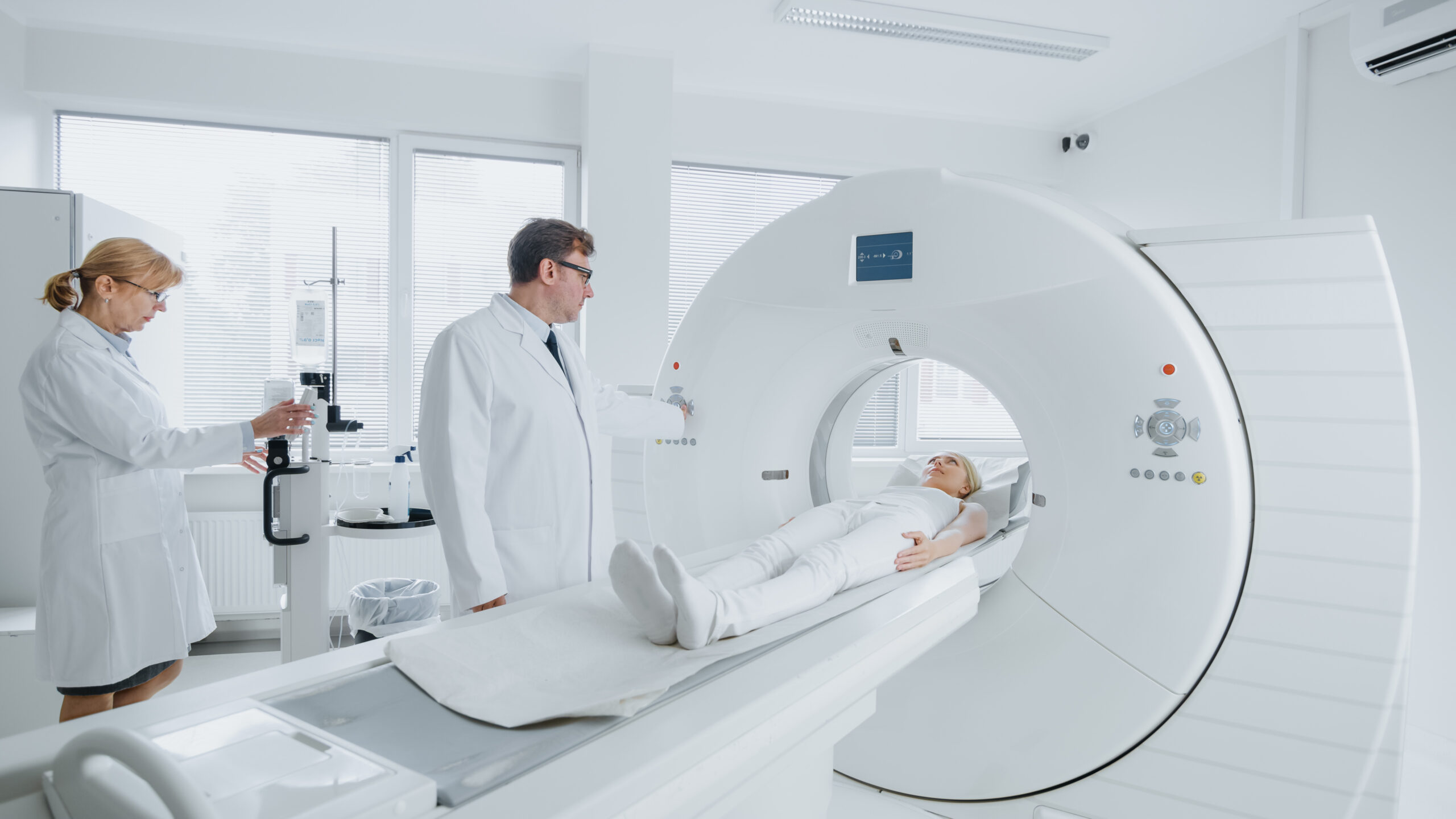Magnetic Resonance Imaging (MRI) is another valuable imaging technique used in obstetrics and gynecology to provide detailed images of the reproductive system and pregnancies. Healthcare professionals use MRI less frequently than ultrasound for routine prenatal care, but they employ it in specific situations where more detailed information is needed. Here’s how MRI is used in obstetrics and gynecology:
Obstetric Magnetic Resonance Imaging:
MRI can offer detailed images of the fetus and the surrounding structures in certain situations:
Fetal Anomalies: When an ultrasound indicates a possible fetal anomaly, MRI can provide more detailed images to confirm or further assess the condition.
Placental Abnormalities: MRI can provide information about the placenta’s location, health, and potential issues.
Uterine Abnormalities: MRI is useful for assessing uterine anomalies, fibroids, and other structural abnormalities that may impact pregnancy.
Diagnosing Fetal Brain Abnormalities: In cases where ultrasound is inconclusive, MRI can help diagnose fetal brain abnormalities.
Gynecological Magnetic Resonance Imaging:

Healthcare professionals use gynecological MRI to evaluate various gynecological conditions and provide detailed images of the reproductive organs.
Uterine Abnormalities: MRI can visualize uterine fibroids, adenomyosis, and other structural issues.
Endometriosis: MRI can help detect and visualize endometriosis lesions, aiding in diagnosis and treatment planning.
Ovarian Cysts and Tumors: MRI can provide detailed images of ovarian cysts, tumors, and their characteristics.
Pelvic Pain Evaluation: In cases of chronic pelvic pain, MRI can help identify potential causes.
Assessing Pelvic Floor Disorders: MRI can visualize pelvic floor muscles and identify any disorders or abnormalities.
After surgery, healthcare professionals can use MRI to assess the outcomes of gynecological surgeries and interventions.
Advantages of MRI:
Offers several advantages in obstetrics and gynecology:
Detailed Imaging: MRI provides high-resolution images that can offer better visualization of certain structures and conditions compared to other imaging methods.
Non-Radiation: Unlike X-rays and CT scans, MRI does not use ionizing radiation, making it safer, especially during pregnancy.
Multiplanar Imaging: MRI can capture images in multiple planes, allowing for a thorough evaluation of complex structures.
Considerations:
While MRI is valuable, it’s important to note that healthcare professionals typically do not use it as a routine imaging tool for prenatal care. It’s often reserved for cases where more detailed information is necessary or when ultrasound results are inconclusive.
Ultimately, the choice of imaging method depends on the specific situation, clinical indication, and the healthcare provider’s recommendations. MRI is an important tool that can provide additional insights in obstetrics and gynecology, complementing other imaging techniques like ultrasound.


